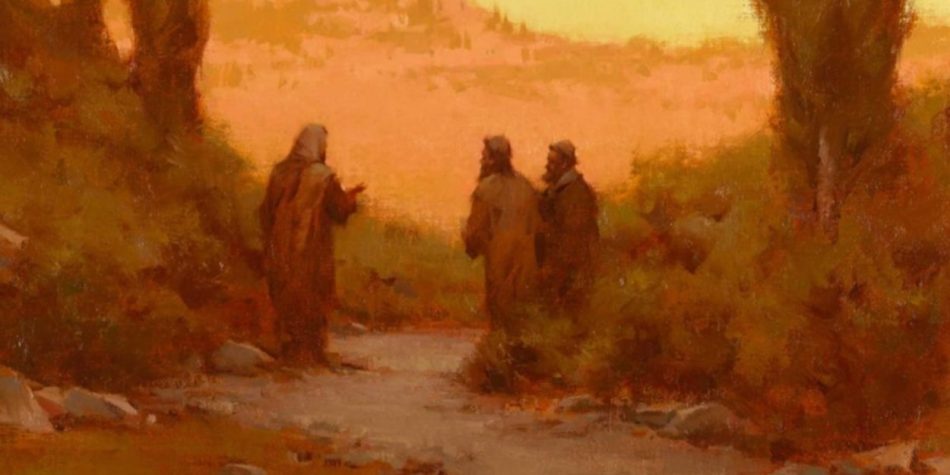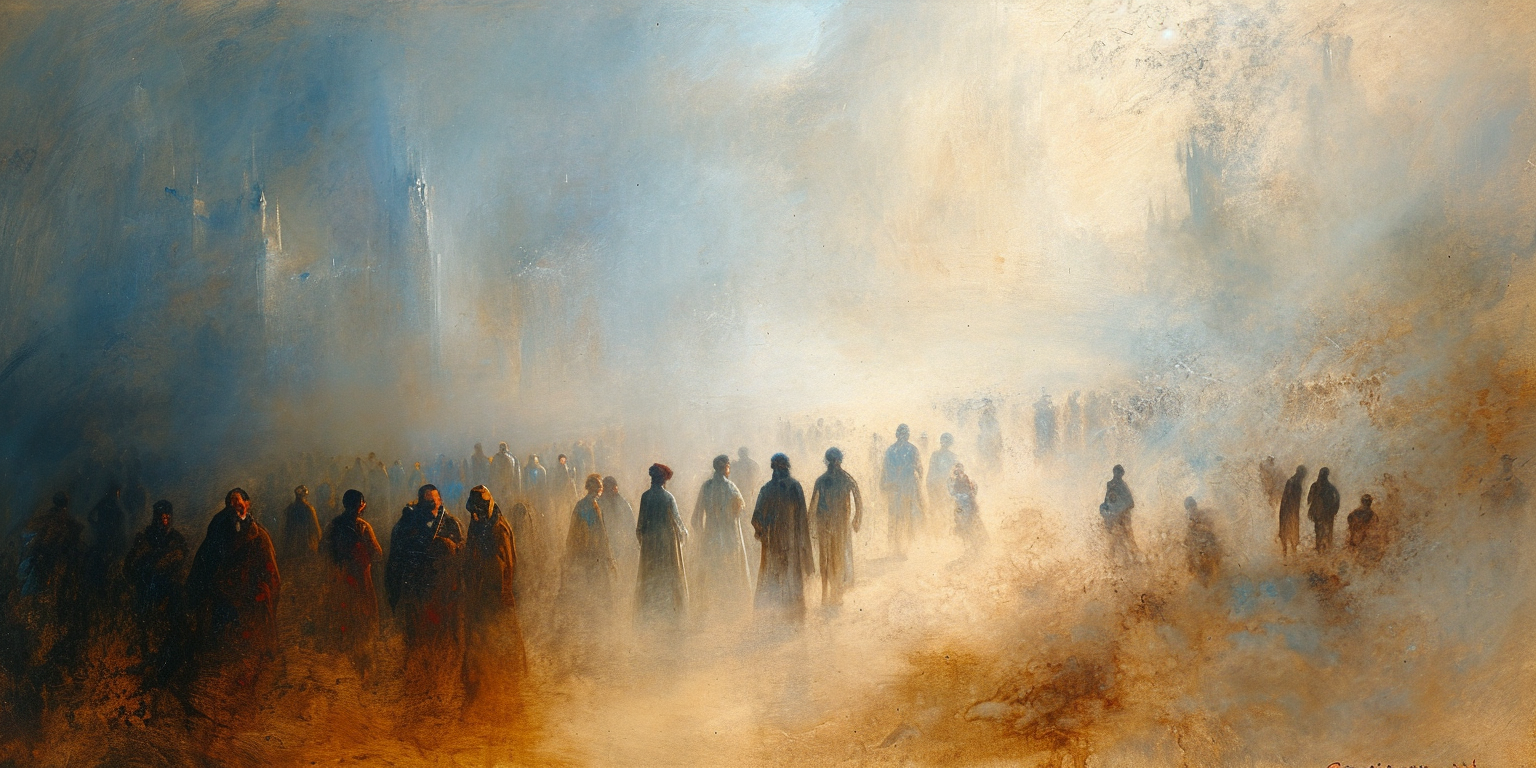There is a question that has been asked of parents from the backseats of cars for decades: “Are we there yet?”
Though most of us eventually outgrow the impatient tone of that query, many sensitive souls today look at their lives and at the world and ask similar questions. Geography is of little import. “Why am I not there yet as a person?” you may ask. “Why are we not there yet as a society?” many wonder.
Life as a journey—a long journey—and not a destination
There can mean many things and places. The skeletons of unfulfilled personal dreams scatter the unseen landscapes of our souls. We long for marriage or children or jobs or nicer things. We yearn to be better in our relationships. We hope for societies brimming with justice, equity, and mutual altruism. We cannot seem to escape racism, tribalism, injustice, and misunderstanding—as well as the consequences of making these our bedfellows.
Though we may not have arrived there, where we would hope to be, those sincerely asking these questions of themselves and of our world are very often the wisest men and women among us. They perhaps sense the incompleteness of things. They recognize life as a journey—a long journey—and not a destination. And they do not mistake rest stops for the final frontier.
I sometimes imagine my religious people, the Latter-day Saints, asking “Are we there yet?” throughout the 1830s and 1840s—a time when they were driven from homes, persecuted violently, and afflicted with sickness and poverty. During this same period, Joseph Smith sought to promote the cause of Zion, a city in ancient times whose citizens were “of one heart and one mind, and dwelt in righteousness; and there was no poor among them.” Joseph was out to build a New Jerusalem, “a land of peace, a city of refuge, a place of safety for the saints of the Most High God.” This would seem to be the ultimate there of “Are we there yet?”
We know, of course, that Joseph’s effort failed in the short term. The early Latter-day Saints were ultimately driven by enemies from New York to Ohio to Missouri to Illinois. They finally found a somewhat permanent home 1,250 miles west in what we now call Utah. With each move, Joseph Smith, and later Brigham Young, sought heavenly help to guide their next steps.
Interestingly, some of these early Saints thought the next place was their ultimate destination. They had good reason. One 1831 revelation given to Joseph commanded the people to go to Ohio and spoke of a “land of promise” in their (seemingly) immediate future. The former Reformed Baptist Sidney Rigdon, an eloquent early Latter-day Saint leader, was one of those who was, at first, certain that the call to gather in Ohio was a final stop for this 10-month-old religious movement. Rigdon wrote from New York to the Saints already gathered in Ohio, “The Lord has made known unto us, some of his great things which he has laid up for them that love him, among which the fact (a glory of wonders it is) that you are living on the land of promise, and that there is the place of gathering … and [God] has given it to us and our children, not only while time lasts, but we shall have it again in eternity.” Lucy Mack Smith, Joseph’s mother, was equally exultant at the opportunity awaiting them in Ohio. She wrote that God would “come and reign on ea[r]th with them a thousand years” after they gathered there.
But not everyone rushed so quickly to conclusions. Thomas B. Marsh, for example, understood Ohio to be a temporary stop on the way to the promised New Jerusalem.
“The Lord calleth for all to repent & take upon them the name of Ch[rist] & assemble at Ohio speedily & thare our Heavenly Father will tell us what we shall next do,” Marsh wrote to his sister and her husband. “Perhaps it will be to take our march to the grand prairies in the Missouri territory or to the shining mountains which are 1,500 or 2,000 miles west from us. How soon this will be we do not know. In fact, we know nothing of what we are to do save it be revealed to us. But this we know—a City will be built in the promised land” (spelling and grammar modernized).
Marsh’s response is a timeless gem of wisdom, both for Latter-day Saints and anyone else who will listen. To borrow from John Bunyan’s Pilgrim’s Progress, we could say that Marsh understood that proximate circumstances can and will change as we make the sometimes circuitous journey to the ultimate Celestial City.
Of course, we know Ohio, Missouri, and Illinois were not final destinations for the Church. But was Utah? Had someone asked the question, “Are we there yet?” of Brigham Young in his covered wagon in July 1847, his oft-quoted comment (one challenged by some historians) that “this is the right place” would have been a fitting and refreshing answer for the beleaguered Saints at that time.
But where is there for today’s church? Ask any serious Latter-day Saint the question, “Are we there yet?” as a faith. Assuming there is Joseph Smith’s envisioned place of peace, equity, and perfect understanding, one can only hope the answer will be a resounding “No!” Our aspirations as a faith are too high and our vision too longitudinal to ever, in this world, say otherwise.
“Historians, philosophers, and scientists all agree that life on this earth has been and is one continuous, never-ceasing process of readjustment,” Hugh B. Brown, a member of the First Presidency of The Church of Jesus Christ of Latter-day Saints, told students at Brigham Young University in 1969. “Your generation is maturing in body and mind at an earlier age than did preceding generations, and as you become aware of that fact, you are inclined to become critical of the older generation—sometimes with justification. We are not here to defend ourselves against you; we are here to let you know some things we have learned the hard way—sometimes by sad experience.”
In case we, 51 years removed from President Brown’s remarks, think our generation has finally figured it all out, we ought to allow scripture to prick our over-inflated egos. “Wo be unto him that is at ease in Zion! Wo be unto him that crieth: All is well!” one Book of Mormon prophet warns. Another important component of the Latter-day Saint creed, if there is one, is that “We believe … that [God] will yet reveal many great and important things.”
Nobody, Latter-day Saint or otherwise, should ever swerve from the path of creating a better world.
This year Latter-day Saints are celebrating the 200th anniversary of Joseph Smith’s first encounter with Deity. That First Vision, as we call it, is rooted in the eternal human quest for knowledge. Joseph asked questions. God gave him answers. What has happened in the 200 years since then—including the creation of a global family of 16.5 million believers who can be found in nearly every nation—is a remarkable thing. But, as President Russell M. Nelson told church media during a visit to Hanoi, Vietnam, in November 2019, proper historical perspective is in order. “We think of 200 years as being kind of a long time,” he said. “But [to] the Asians and the Europeans, 200 years is the snap of a finger compared with their rich history. I remember going to Budapest [when it was] celebrating its 1,000th-year anniversary on one of my visits there.”
In a recent commentary on the Second Coming of Christ and the future of The Church of Jesus Christ of Latter-day Saints (and, by default, on the future of the world), President Nelson again took the long view. When Christ returns, he said. “He will govern from two world capitals: one in old Jerusalem (see Zechariah 14) and the other in the New Jerusalem ‘built upon the American continent’ (Articles of Faith 1:10). From these centers, He will direct the affairs of His Church and kingdom. Another temple will yet be built in Jerusalem. From that temple, He shall reign forever as Lord of Lords.”
Note that the New Jerusalem, that “land of peace” and “city of refuge” first envisioned by Joseph Smith but not achieved due to unforeseen adversity, is still something Latter-day Saints look forward to, even two centuries later. In the meantime, we seek to create communities of peace and refuge wherever we live. Nobody, Latter-day Saint or otherwise, should ever swerve from the path of creating a better world. Our efforts, however small, “are laying the foundation of a great work.”
So, when we are tempted to wring our hands and retreat to our comfortable places in disgust at the state of our own souls, or of some parts of our faith community, or of our society at large, we should reconsider. Latter-day Saint theology is imbued with patient optimism. It reminds us to recognize Who is at the wheel. And if we are sitting in the backseat of the ride of life and impatiently asking God, “Why aren’t we there yet?” we should not be surprised to hear Him invite us up to the front to be co-pilot in His salvation project. We “should be anxiously engaged in a good cause, and do many things of [our] own free will, and bring to pass much righteousness,” He told Joseph Smith in 1831. It is only in doing this that we invite more light into our world. And more light equals more of God, something that can grow in us and our communities “brighter and brighter until the perfect day.”
These are good reminders for people of goodwill everywhere. There is always more light to discover, more progress to be made.
So let’s get to work.

















